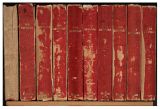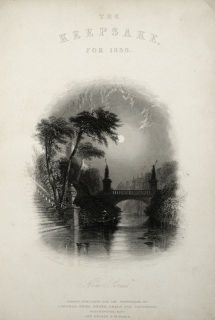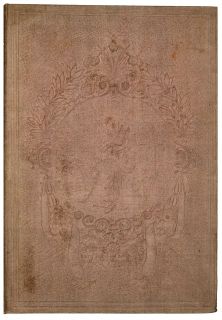Case 5: The KeepsakeThough not the first, The Keepsake was one of the most important and longest running annuals. Its proprietor, Charles Heath, popularized many aesthetic innovations and marketing techniques that would become defining features of the genre. In 1827, the first volume of The Keepsake for 1828 appeared in a crimson watered-silk binding. That same year other volumes began to present themselves in similar dress (see Item 18a). Another innovation of The Keepsake was its increase in size—an octavo volume, priced at 13 shillings. In the 1830s, deluxe royal octavo formats were also available for display-conscious purchasers, but they cost well over two pounds. Still, the regular Keepsake was less expensive than a new three-volume novel or poetry monograph and offered purchasers works by the leading authors of the day. Though the contributions to the first Keepsake were anonymous, the importance of names was soon recognized. The Keepsake for 1829 brought together the most influential writers of the day, and the editors boasted that they had spent exorbitant sums to secure the best and most famous authors and engravers. Soon The Keepsake's reputation rivaled those of its contributors. Attempting to harness the name power of The Keepsake, competing annuals sought to associate themselves with their more famous counterpart, and annuals such as The Biblical Keepsake, The Christian Keepsake, The Juvenile Keepsake, and The Historical Keepsake appeared throughout the 1830s.
Item No. 21: The First Keepsake Published in the fall of 1827, The Keepsake for 1828 was the first edition of the annual to be produced. The preface to the volume asserts that the "principal object" of The Keepsake was "to render the union of literary merit with all the beauty and elegance of art as complete as possible." The frontispiece and engraved title page are examples of the volume’s elegant art; both were done by the famous engraver Charles Heath. |
|
 [click image to enlarge] |
|
|
Item No. 22: Silk The Keepsake's crimson silk binding became a recognizable feature of the annual and attracted purchasers who wanted to own complete, matching sets. Charles Heath supposedly ordered 4,000 yards of silk to bind the 1829 edition. Looking at the once lavish spines of these volumes of The Keepsake from 1828 to 1837, the delicacy, rather than durability, of the silk is evident. | |
 [click image to enlarge] |
|
Item No. 23: Literary Novelty The Keepsake for 1830, much like that of the previous year, boasted an impressive stable of writers. Especially significant was the editor’s ability to obtain and publish several letters from Lord Byron's private correspondence. |
|
 [click image to enlarge] |
|
Items No. 24a and No. 24b: New Series In 1838, the New Series of The Keepsake was introduced. In order to compete with other larger display annuals such as Fisher's Drawing Room Scrap-Book, the 1838 Keepsake was produced in a larger format to display the beautiful engravings, such as the title page pictured here. The crimson silk binding was replaced with a pale pink silk stamped binding. The front cover features a woman at a lyre enclosed in a decorative wreath. |
|
 [click image to enlarge] |
 [click image to enlarge] |
| < Previous | Next > |
